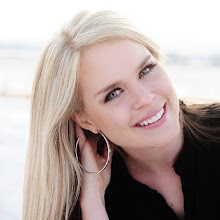What are all these strange words you're supposed to be saying yes to??
Lakanto - This all natural sweetener is a zero glycemic, non-caloric sugar substitute. Enjoyed in Japan for nearly a decade. Lakanto was formulated by combining an extract of Luo han guo (chinese plant) with Erythritol fermented from non-GMO corn. Erythritol is the only sugar alcohol made by fermentation. Ideal for diabetes, obesity, and all health concious consumers.
One for One sugar substitute:
Lakanto can be used just like sugar since its sweetness is equivalent. Over two years of research went into formulating Lakanto to duplicate the sweetness profile of sugar. It's great anytime you want a delicious sweet taste. Lakanto is perfect for cooking, and baking since it will not discolor or disintegrate when heated. Delicious tasting. No after taste. Does not cause CAVAIES.
More information on Lakanto can be found at www.bodyecology.com
Truvia - Rebiana comes from the sweet leaf of the stevia plant, native to South America. Dried Stevia leaves are steeped in water, similar to making tea. This unlocks the best tasting part of the leaf which is then purified to provide a calorie-free sweet taste. Erythritol is a natural sweetener, produced by a natural process, and is also found in fruits like grapes and pears. Read mor about Truvia at www.truvia.com
Stevia - Stevia Rebaudiana is a small plant native to Paraguay and Brazil. It was "discovered" in 1887 by a South American scientist named Antonio Bertoni who learned of the herb from the Guarani Paraguayan Indians. Stevia was known locally as Caa'-ehe or Kaa'-he-e which means "sweet herb" or "honeyleaf."
Two French chemists named Bridel and Lavieille began to unravel the secret of Stevia in 1931 with exploratory extraction work on Stevia Rebaudiana leaves. Their research yielded a pure, white crystalline compound they named "Stevioside." They found this substance to be 100-300 times sweeter than table sugar and with out toxic effects in laboratory animals.
In 1971 a Chinese researcher, Dr. Tei-fu-chen visited Paraguay where he became so interested inStevia that he applied for residency status in both Paraguay and Brazil. The non-chemical method of extraction (alcohol) recorded in herbal manuscripts of Chinese emporers became the standard method of extraction for Stevia. It removed the undesirable green color and bitter after taste that is found in Stevia Leaves.
Dozens of studies have shown Stevia to be a safe supplement for the human diet, and it is currently used extensively through out the world in a variety of ways. This information came from the company "NOW" however, I am a bigger fan of Body Ecology's brand of Stevia (for purity and taste).
Blue Agave Nectar - There are a lot of imposters out there claiming to be Agave, it's hard to tell if you're getting a good brand or not. Agave is a natural sweetener that is similar to honey or syrup in color and texture. It is extracted from the heart of the Agave plant which is a cactus. It has a light to dark amber coloring. It is a low glycemic index sweetener, so itis slowly absorbed into the body preventing spikes in blood sugar. It's 25% sweeter than sugar so less is needed.
In our family, we use Truvia the most, Lakanto second, and Stevia last. Only because it's a matter of taste bud preferences amongst each family member. We use Agave in place of Maple Syrup. Although many people use a pure maple syrup, I have found that Dylan has less of a reaction of spiked energy from the sweeteners listed above. That doesn't mean that I'm dissing Pure Maple Syrup, it's just not high on this list.
Please see my other posts under "Archive" for more information on High Fructose Corn Syrup, Aspartame, etc. "Just say No!" Literally, they might as well be drugs dealt on the streets...let alone in our FOOD!
Subscribe to:
Post Comments (Atom)









No comments:
Post a Comment